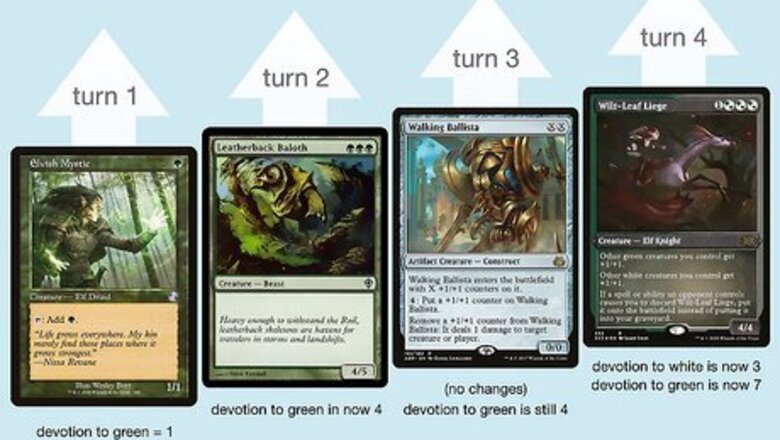
views
How does devotion work?
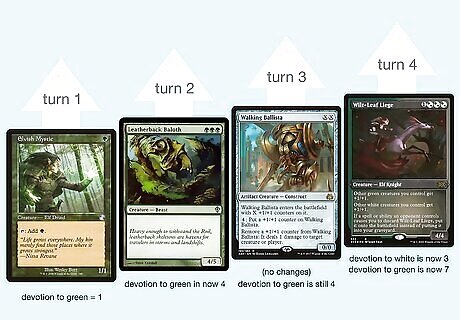
Devotion counts the number of pips in a given color on the board. In MTG, a pip refers to a single instance of a colored mana in a card’s mana cost. Devotion is a mechanic that cares about the total number of pips in a certain color on the board. Notably, it is only counting pips—not colorless mana. Here is an example: On a basic level, let’s say you play an Elvish Mystic on turn one. Since it has one green pip, your devotion to green is now 1. Next turn, you play a Leatherback Baloth. It has 3 green pips so your devotion to green is now 4. The next turn, you play a Walking Ballista for four mana where X is 2. Since there are no colored pips in Walking Ballista’s mana cost, it does nothing to change your devotion. Next turn, you play a Wilt-Leaf Liege. The 1 colorless mana doesn’t count, but it increases your white and green devotion with the 3 hybrid mana. Now, your devotion to white is 3 and your devotion to green is 7.
History of Devotion
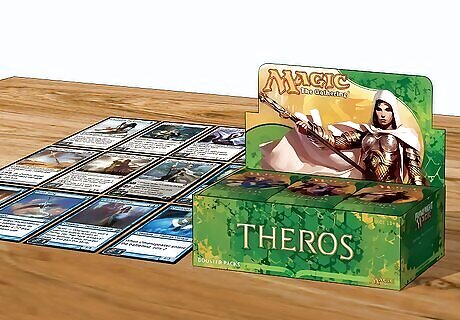
Devotion was first introduced with the Theros block. Theros was a Greek mythology-inspired set released in 2013. The idea behind the mechanic was that the Gods in Theros grew more powerful based on the number of followers they had (as represented by the mana pips on the field). Each color in the original Theros block had a dedicated God: Heliod, God of the Sun (white), Thassa, God of the Sea (blue), Erebos, God of the Dead (black), Purphoros, God of the Forge (red), and Nylea, God of the Hunt (green). When your devotion to that god’s color reached 5, they’d “return” to battle as a creature. Devotion is identical mechanically to chroma, a mechanic introduced in the Evertide set in 2008. Chroma wasn’t popular because it didn’t have any good cards and the flavor didn’t quite make sense, but devotion has turned into one of the more popular mechanics in the game. Devotion is a unique mechanic because it doesn’t actually do anything on its own. It has no triggers, doesn’t use the stack, and can’t be activated. There are cards with abilities that care about devotion, but devotion itself is just counting pips.
Do cards with devotion count themselves?
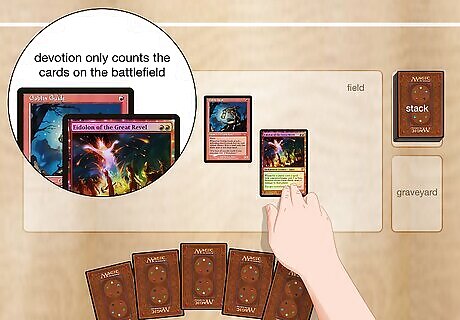
Yes, as soon as a card enters the battlefield, it counts. If a card is on the field, it counts towards your devotion. Just know, devotion does not care about the graveyard, the stack, exile, or your hand. It is only counting the cards on the battlefield. So, if you’ve got a Goblin Guide on the field and then you play an Eidolon of the Great Revel, the devotion count is 1 when the Eidolon is on the stack, but 3 the exact moment the Eidolon enters the battlefield.
Do copies of cards add to devotion?
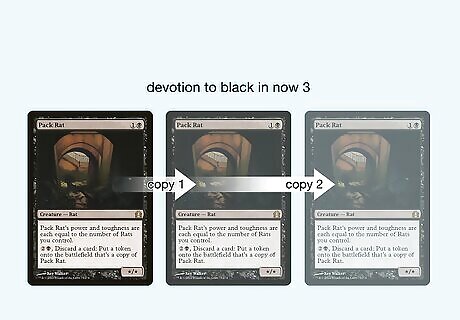
Yes, cards that copy other cards also copy mana costs. If a card duplicates another card or creates a copy of another card, the mana cost is recreated as well. Take a look at Pack Rat, as an example. If Pack Rat made two copies of itself on an empty board, your devotion to black would be 3. Cards that clone other cards also copy their mana cost. So, let’s say you cast Phantasmal Image and you copy your opponent’s Boros Reckoner. The Image becomes a copy and now you have 3 devotion to white and 3 devotion to red from the Reckoner. You have zero devotion to blue.
Do tokens count towards devotion?
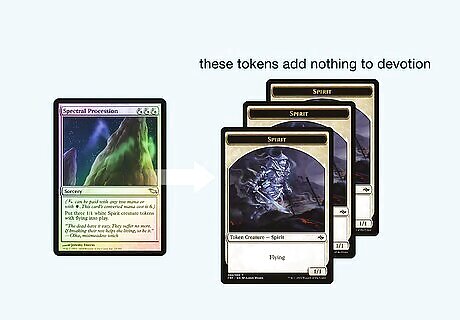
If it’s not a token of a specific card, no—tokens have no mana cost. A token of a specific card on the battlefield will always copy its mana cost. However, if it’s a token creature that isn’t copying something specific, it has no devotion. So, a card like Spectral Procession creates three 1/1 spirit tokens with flying and those tokens add nothing to devotion. The same would apply for tokens created by planeswalkers, tokens generated by sorceries and instants, and tokens created by activated abilities that don’t clone specific cards.
How do alternate costs work with devotion?
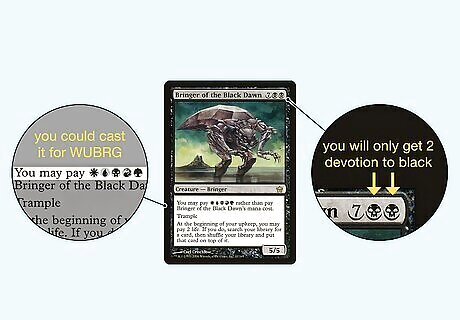
Devotion only cares about the mana cost at the top. Take a look at Bringer of the Black Dawn. While you could cast it for WUBRG, you will only get 2 devotion to black once it hits the board. Any alternative costs for creatures are irrelevant—devotion is exclusively checking the mana value located next to the name of the card at the top. For cards with mutation, devotion only counts the card on top of the mutation stack. Dual-faced cards (like of the Fells) only contribute to devotion if there’s a mana cost on the front. The one exception to the “top line only” rule is with prototype. If you cast a card with prototype for its alternate cost, that becomes the mana cost of the card. So, if you cast [Arcane Proxy] for its prototype cost, your devotion to blue is 2.
How does hybrid mana work with devotion?
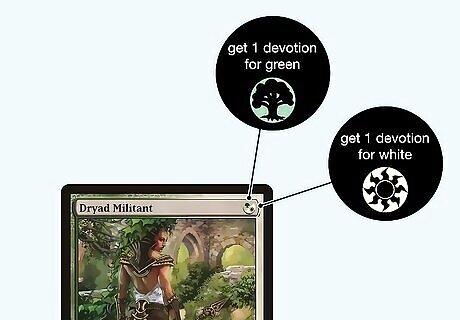
Hybrid pips give devotion to all represented colors. A card like Dryad Militant has a hybrid mana in its converted mana cost—it can be cast for 1 green mana or 1 white mana. On the battlefield, you get devotion for both. Remember, colorless mana does not contribute to devotion. A card like Augury Adept grants devotion of 2 blue and 2 white, but that 1 colorless mana does nothing.
Most Powerful Devotion Payoffs
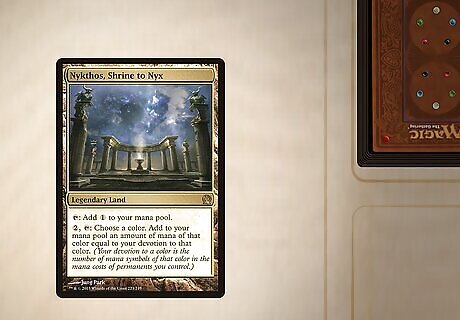
Nykthos, Shrine to Nyx Nykthos is a legendary land that lets you generate mana equal to your devotion to a particular color. If you’re playing a lot of creatures with a lot of color pips in their mana cost, this adds up fast. In fact, it can theoretically churn out more than 6 mana on turn 4, which allows you to cast heavy hitters faster than your opponent can react. Devotion decks are basically always mono-colored (i.e. all black, all green, etc.), so including 3-4 copies of Nykthos rarely impacts the castability of cards early on. Nykthos gets especially wild when decks can find a way to untap it and use mana it generated to reactivate it for twice as much mana (-2 for the activation cost). This is why it’s often paired with Voyaging Satyr and Kiora, Behemoth Beckoner.
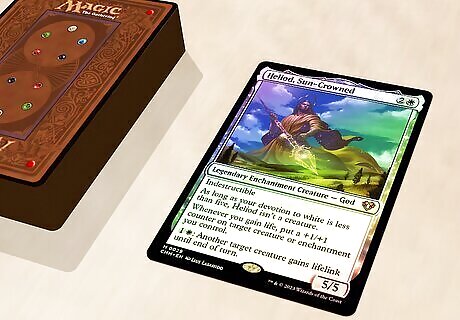
Heliod, Sun-Crowned Heliod, Sun-Crowned is the second iteration of the original white Theros God. This update is a key combo piece because it combos with Walking Ballista to create an infinite damage combo. On top of that, Heliod can be fetched with Collected Company, making it a powerful instant-speed draw. When players refer to the “Heliod” combo, they’re referencing decks that run the Ballista/Heliod package in their deck. All of the devotion-themed gods are powerful if you build a deck that can utilize them and turn them into creatures. Heliod is unique because he doesn’t need to “turn on” to win the game on its own.

Gray Merchant of Asphodel Affectionally known as “Gary,” Gray Merchant of Asphodel is perhaps the most powerful devotion payoff of all in the right deck. When it hits the board, it drains your opponent’s life total equal to your devotion to black. Throw a few Phyrexian Obliterators and Geralf’s Messengers on the board and you can win the game on the spot. Mono-black devotion is one of the few “pure” devotion decks that don’t win with a combo of some kind. It’s commonly played in Pauper, Modern, Historic, Pioneer, and there are even a fringe Legacy mono-black devotion deck.
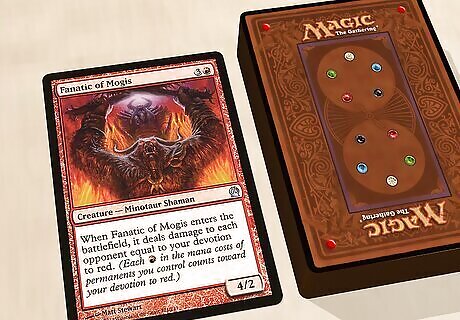
Fanatic of Mogis Fanatic of Mogis is basically the red version of Gray Merchant of Asphodel. It deals damage to each opponent based on your devotion to red. It doesn’t see as much play as Gary does because red usually has faster tools to win the game, but it’s a fun buildaround if you want to give red devotion a shot!
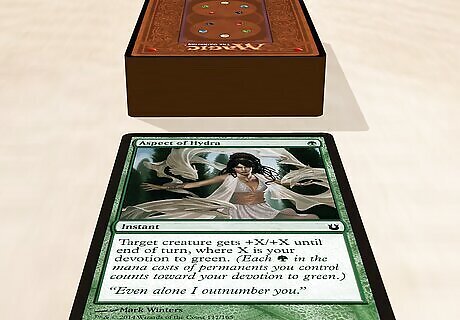
Aspect of Hydra Aspect of Hydra slots into any mono-green aggro deck. It’s an instant that buffs creatures based on their devotion to green. When paired with cards like Vines of Vastwood and Old-Growth Troll you’ve got a winning strategy on your hands. Mono-green aggro decks are often called “stompy” decks because they rely on beater creatures to stomp all over the opponent’s creatures. If you’re looking to get into Modern, mono-green stompy with Aspect of Hydra is an incredibly cheap entry point for the format.

Purphoros, God of the Forge Purphoros is the original red god from Theros. It deals 2 damage to each opponent whenever a creature enters the battlefield under your control, turning cards like Kuldotha Rebirth and Mogg War Marshal into powerful burn spells. Purphoros also turns into an indestructible creature with a devotion of 5 or greater (just like the other gods). Throw a few Boros Reckoners and Burning-Tree Emissaries in your deck to turn it on quickly.
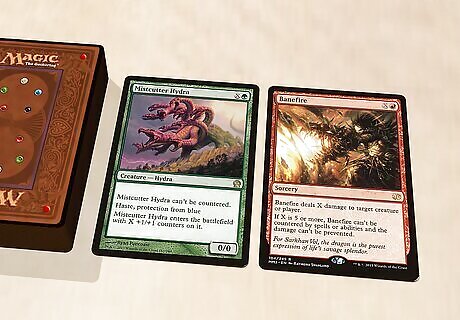
Any creature or spell with an X in the cost. Devotion decks are notorious for generating a frankly ridiculous amount of mana, so anything you can sink your mana into is an extremely attractive inclusion. Banefire becomes a serious threat. Mistcutter Hydra can win the game out of nowhere. If it’s got an X in the casting cost, devotion can make it work. Alongside Nykthos, cards like Karametra’s Acolyte and Magus of the Candelabra help churn out silly amounts of mana. This is part of why devotion is such a popular mechanic from brewers. You can basically convert entire shells and ideas into devotion decks just based on the amount of mana you can generate.
















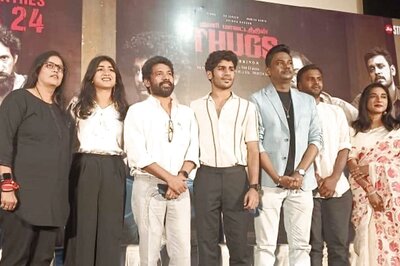
Comments
0 comment